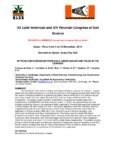Por favor, use este identificador para citar o enlazar este ítem:
http://www.alice.cnptia.embrapa.br/alice/handle/doc/1014212Registro completo de metadatos
| Campo DC | Valor | Lengua/Idioma |
|---|---|---|
| dc.contributor.author | FONSECA DA SILVA, J. | pt_BR |
| dc.contributor.author | CARVALHO, A. M. de | pt_BR |
| dc.contributor.author | REIN, T. A. | pt_BR |
| dc.contributor.author | ROCHA, R. B. | pt_BR |
| dc.contributor.author | RIBEIRO JUNIOR, W. Q. | pt_BR |
| dc.contributor.author | COOMES, D. A. | pt_BR |
| dc.date.accessioned | 2015-04-24T11:11:11Z | pt_BR |
| dc.date.available | 2015-04-24T11:11:11Z | pt_BR |
| dc.date.created | 2015-04-24 | pt_BR |
| dc.date.issued | 2014 | pt_BR |
| dc.identifier.citation | In: CONGRESO LATINOAMERICANO DE LA CIENCIA DEL SUELO, 20.; CONGRESO PERUANO DE LA CIENCIA DEL SUELO, 16., 2014, Cusco. Educar para preservar el suelo y conservar la vida en la tierra. Cusco: Centro de Convenciones de la Municipalidad del Cusco, 2014. 1 Pendrive. | pt_BR |
| dc.identifier.uri | http://www.alice.cnptia.embrapa.br/alice/handle/doc/1014212 | pt_BR |
| dc.description | Soil fertilization with mineral nitrogen and organic fertilizers, such as the vinasse ? a liquid waste from bio-ethanol production, is a common practice on the sugarcane produced in Brazil that can lead to increasing emissions of greenhouse gases. Nitrous oxide (N2O) is a greenhouse gas even more harmful than the carbon dioxide (CO2), and has longer residence time in the atmosphere. The present study has been conducted on a sugarcane irrigated experiment established at the EMBRAPA Cerrados research station, in Brazil. We hypothesized that N2O emissions would be higher in the sugarcane fields, especially in the fertilized areas that combined mineral nitrogen (N) and vinasse (V), than in the native vegetation remnants (Cerrado); and that irrigated soils would have the highest fluxes of N2O. First measurements were done after the application of N and vinasse in May 2014 until June 2014 as an intensive campaign, and continuous monitoring have been conducted so far. Preliminary results showed that higher emissions occurred on soils combining N and V, showing fluxes that were twice as higher than the fluxes from other treatments, and 100 times bigger than fluxes from soils with native vegetation (469±158, 62.3±6.9, and 0.8±0.1 for V+N, N and Cerrado areas, respectively). The present study is pioneer in the Cerrado region and data are important to assess the regional variations on the N2O fluxes in Brazil, to reduce the bias on national estimations of N2O emissions, and to find more sustainable solutions for the production of bio-ethanol from sugarcane. | pt_BR |
| dc.language.iso | eng | eng |
| dc.rights | openAccess | eng |
| dc.subject | Emissão de gás | pt_BR |
| dc.subject | Óxido nitroso | pt_BR |
| dc.subject | Nitrogen fertilisers | pt_BR |
| dc.title | Nitrous oxide emissions from soils under sugarcane fields in the Cerrado. | pt_BR |
| dc.type | Artigo em anais e proceedings | pt_BR |
| dc.date.updated | 2015-04-24T11:11:11Z | pt_BR |
| dc.subject.thesagro | Solo | pt_BR |
| dc.subject.thesagro | Cana de açúcar | pt_BR |
| dc.subject.thesagro | Biocombustível | pt_BR |
| dc.subject.thesagro | Fertilizante nitrogenado | pt_BR |
| dc.subject.thesagro | Vinhaça | pt_BR |
| dc.subject.thesagro | Cerrado | pt_BR |
| dc.subject.nalthesaurus | Soil | pt_BR |
| dc.subject.nalthesaurus | Sugarcane | pt_BR |
| dc.subject.nalthesaurus | Bioethanol | pt_BR |
| dc.subject.nalthesaurus | Vinasse | pt_BR |
| dc.subject.nalthesaurus | Gas emissions | pt_BR |
| dc.subject.nalthesaurus | Nitrogen oxides | pt_BR |
| dc.subject.nalthesaurus | Savannas | pt_BR |
| dc.subject.nalthesaurus | Brazil | pt_BR |
| riaa.ainfo.id | 1014212 | pt_BR |
| riaa.ainfo.lastupdate | 2015-04-24 | pt_BR |
| dc.contributor.institution | ARMINDA MOREIRA DE CARVALHO, CPAC; THOMAZ ADOLPHO REIN, CPAC; WALTER QUADROS RIBEIRO JUNIOR, CPAC. | pt_BR |
| Aparece en las colecciones: | Artigo em anais de congresso (CPAC)  | |
Ficheros en este ítem:
| Fichero | Descripción | Tamaño | Formato | |
|---|---|---|---|---|
| CongressoLatinoamericanoPeruanoCienciadoSolo6.pdf | 283,34 kB | Adobe PDF |  Visualizar/Abrir |









